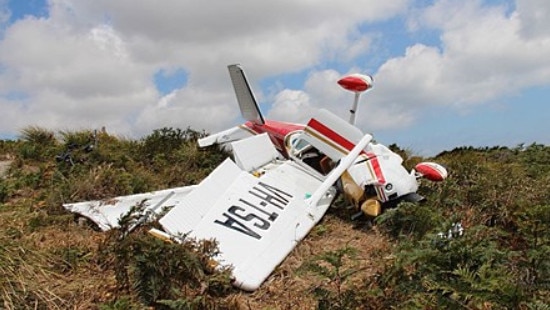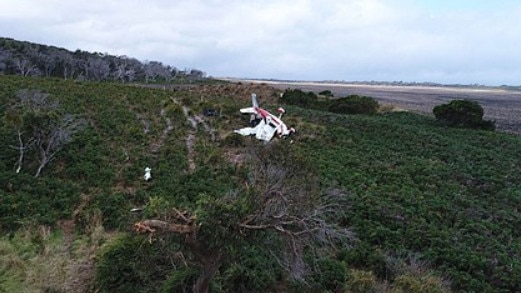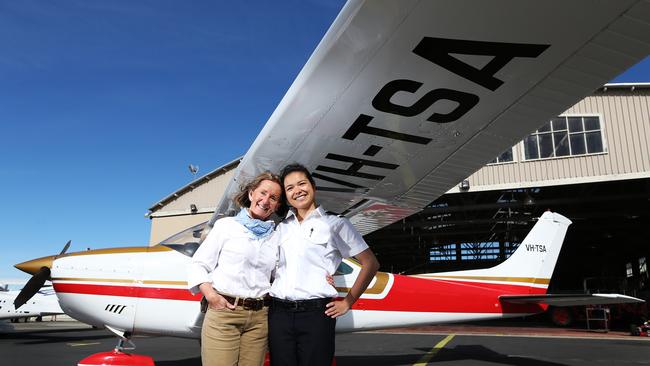Australian Transport Safety Bureau rules on what caused Tomahawk air crash in which Sandra Southwell died in 2018
Australia’s air safety watchdog has handed down its findings into a fatal air crash near Tomahawk in Tasmania’s North-East.

Tasmania
Don't miss out on the headlines from Tasmania. Followed categories will be added to My News.
PILOTS have been reminded to double check the direction and strength of the wind before trying to land, as the transport watchdog hands down its report into a fatal plane crash in Tasmania’s northeast.
The Australian Transport Safety Bureau found the plane in which respected pilot Sandra Southwell was a passenger was flying too high and fast as it approached a runway on a private property in Boobyalla, near Tomahawk on January 20 last year.
The plane had taken off from Sheffield and was being flown by Mrs Southwell’s partner Barry Bransden.
As he approached the runway a tailwind increased the ground speed and decreased the landing distance.
The aircraft touched down more than halfway along the runway before bouncing several times.

In response, the pilot did “a go-around” — where they increase the power and attempt to climb out. As part of that climb out, the Cessna 182 VH-TSA hit a tree past the end of the landing strip.
“The passenger was fatally injured and the pilot sustained serious injuries. The aircraft was substantially damaged,” the ATSB said.
The ATSB said it was important pilots obtained all relevant information about the local conditions, including wind direction and strength, before starting an approach to an airstrip.
“While a windsock is not required for all aircraft landing areas, it provides a simple visual means for pilots to assess the wind direction and strength,” the ATSB report said.

“This accident highlights the importance of conducting a standard approach to an aerodrome. “This enables assessment of the environmental and runway conditions and allows checks to be completed in a predictable manner. If a safe landing cannot be assured, a pilot should initiate a go-around early, and ensure the aircraft is configured in accordance with the operating handbook.”
The ATSB investigation found the pilot’s selected approach direction had exposed the aircraft to a tailwind that significantly increased the ground speed on the final approach and resulted in insufficient landing distance.
“Additionally, the final approach path was not stable. In combination with the tailwind, that resulted in the aircraft being too high and fast with a bounced landing well beyond the runway threshold. “
MORE TASSIE NEWS TODAY
AFLW FINALS PUSH GAINS TOP-LEVEL SUPPORT
NEW LIFE FOR FORMER BIKIE CLUBHOUSE
MAN, 31, DIES AFTER CAR HITS TREE
RHH PULLS PLUG ON PLUMBING CONTRACT
CITY TO EMBRACE A RED HOT WEEKEND


